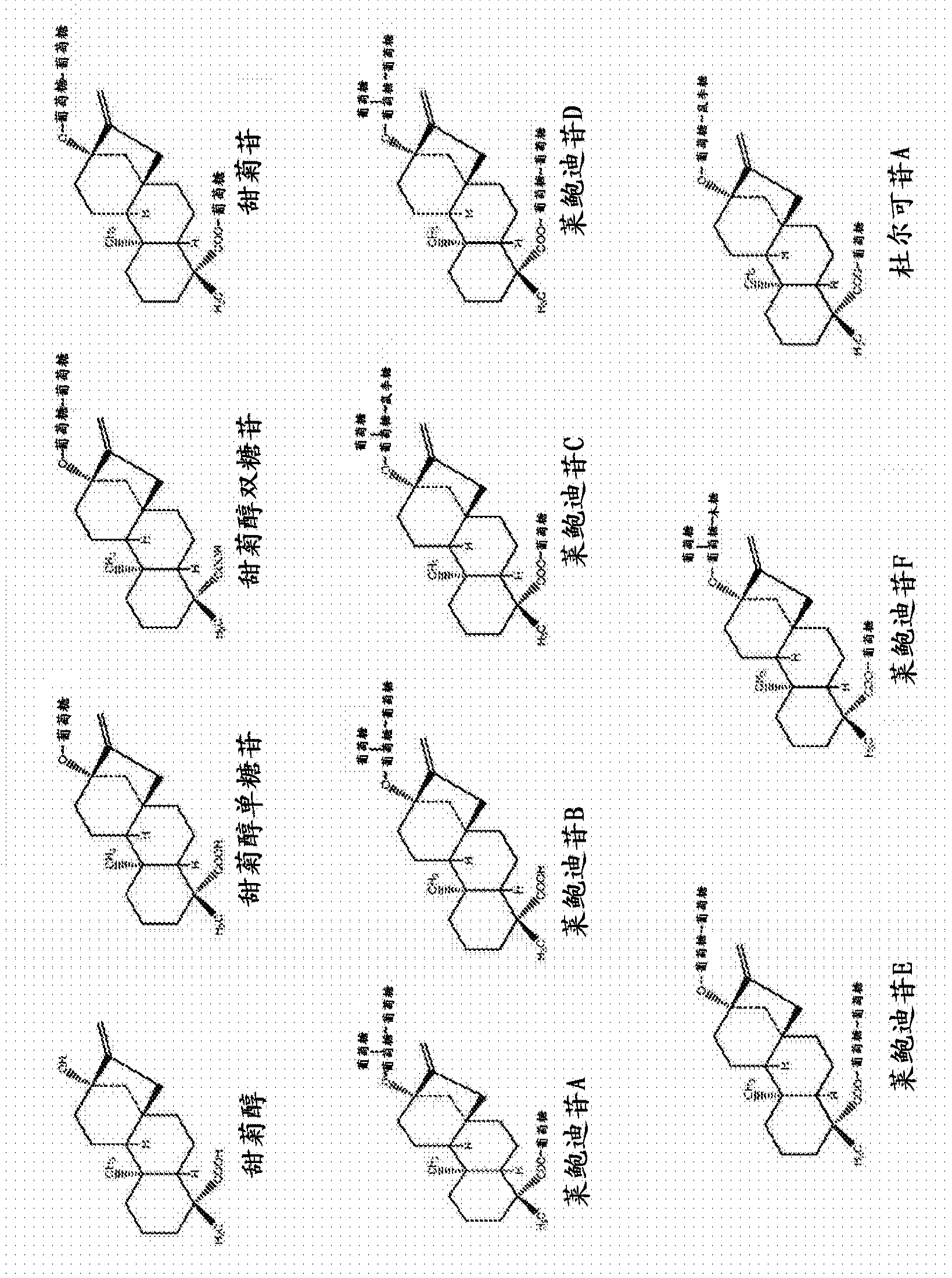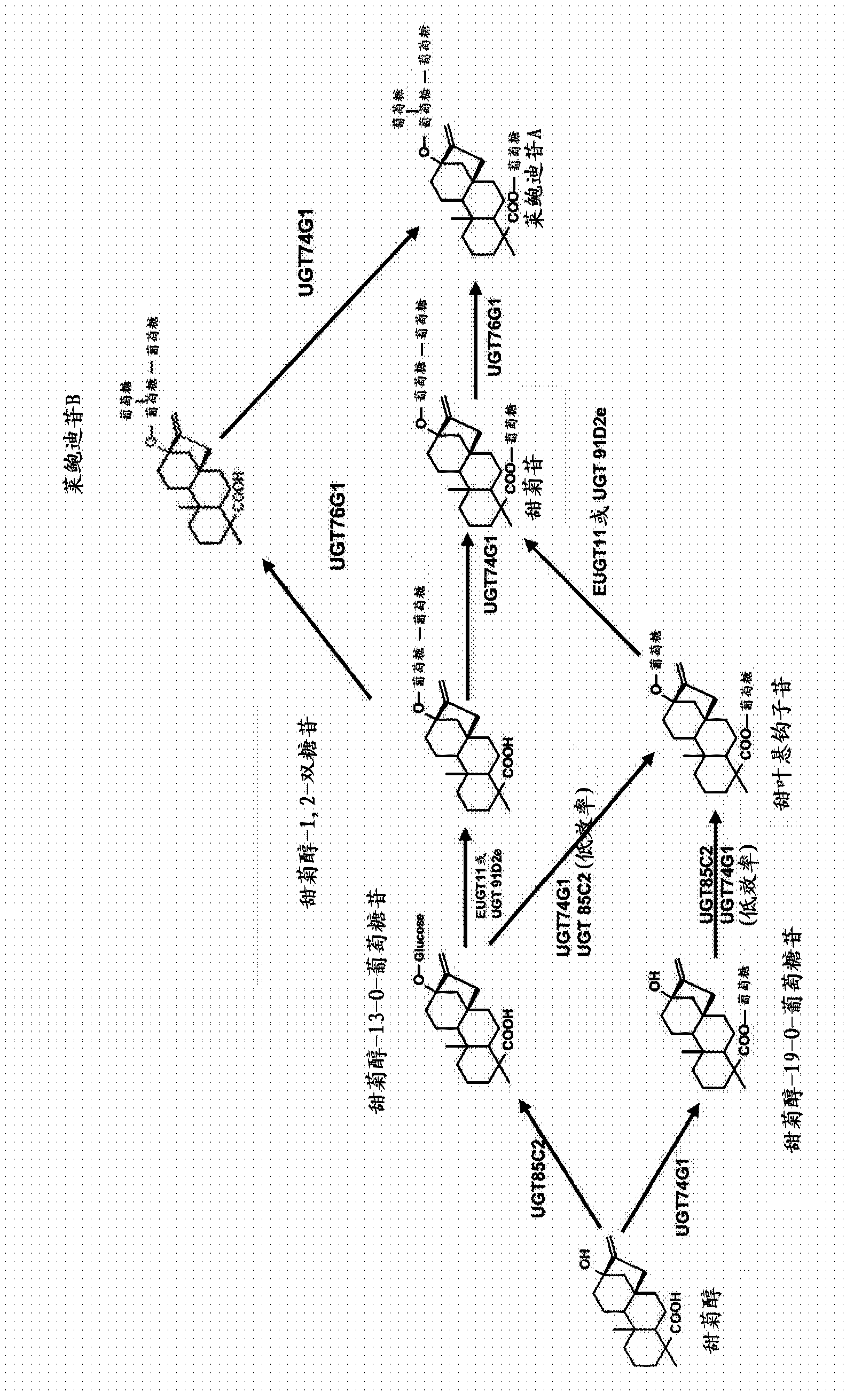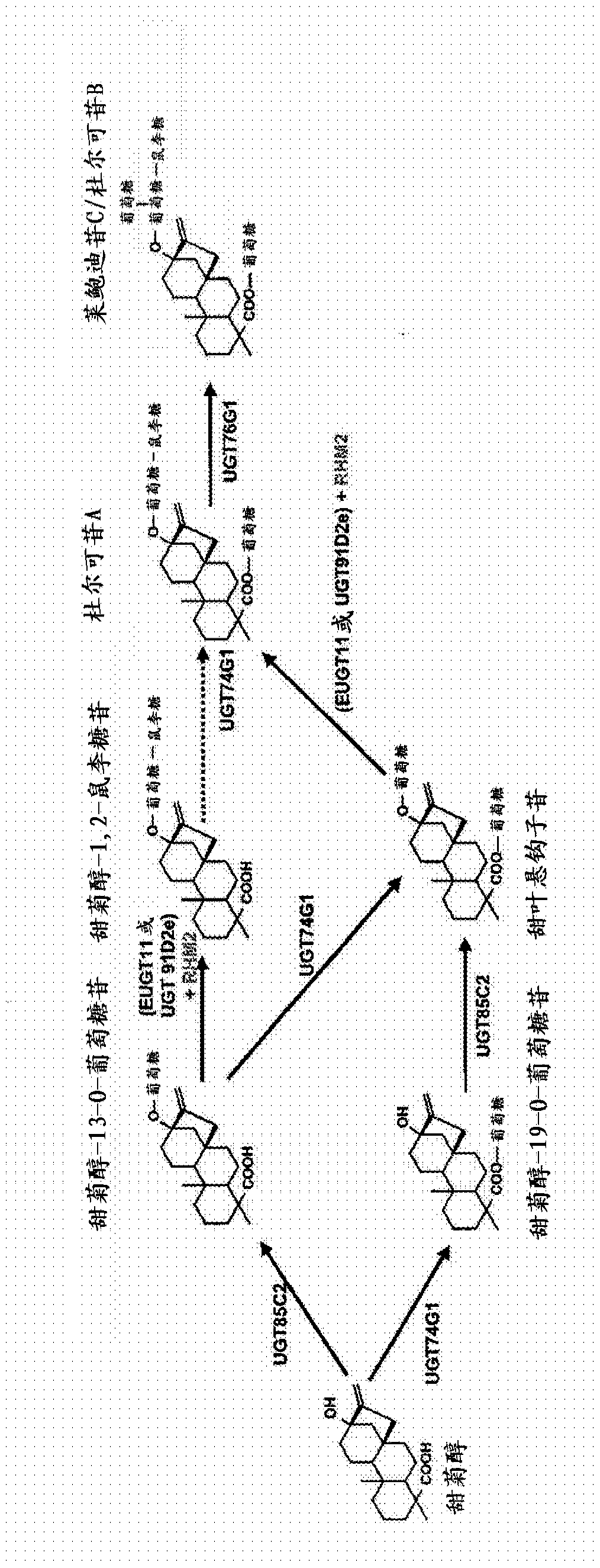Recombinant production of steviol glycosides
A technology of recombinant gene and host, applied in the production of bulk chemicals, recombinant DNA technology, biochemical equipment and methods, etc., can solve problems such as odor
- Summary
- Abstract
- Description
- Claims
- Application Information
AI Technical Summary
Problems solved by technology
Method used
Image
Examples
Embodiment 1
[0656] Example 1 - Identification of EUGT11
[0657] 15 genes were tested for RebA1,2-glycosylation activity. See Table 10.
[0658] Table 10
[0659] name
source
GenBank accession number
EUGT2
Rice UGT91 homologue
AP003270
EUGT3
Rice UGT91 homologue
AP005171
EUGT4
Rice UGT91 homologue
AP005643
EUGT6
Rice UGT91 homologue
AP005259
EUGT7
Rice UGT91 homologue
AP005171
EUGT8
Rice UGT91 homologue
XM_470006
EUGT9
Rice UGT91 homologue
AP005643
EUGT10
Rice UGT91 homologue
AC133334
EUGT11
Rice UGT91 homologue
AC133334
EUGT12
Rice UGT91 homologue
AC133334
EUGT15
Petunia x hybrid UGT79 homologue
Z25802
EUGT16
Arabidopsis UGT79 homologue
AC004786
[0660] EUGT17
Dianthus caryophyllus UGT79 homologue
AB294391
EUGT18
Morning glory UGT79 homologue
AB192314
...
Embodiment 2
[0663] Identification of embodiment 2-EUGT11 reaction
[0664] EUGT11 was produced by in vitro transcription and translation and incubated with various substrates in the RebD pathway. Similar experiments were performed using in vitro transcribed and translated UGT91D2e. image 3 A schematic diagram showing the 19-O-1,2-diglycosylation reaction by EUGT11 and UGT91D2e. Compounds 1 to 3 were individually identified by mass and expected residence time. image 3 The numbers shown in are the average peak heights of the steviol glycosides obtained from the LC-MS chromatograms and, although not quantitative, can be used to compare the activities of the two enzymes. EUGT11 and UGT91D2e cannot use steviol as a substrate. Both enzymes were able to convert steviol 19-O-monoglycoside (SMG) to the compound, with EUGT11 being approximately 10-fold more efficient than UGT91D2e in converting 19-SMG to compound 1.
[0665] Both enzymes were able to convert rubusoside to stevioside with comp...
Embodiment 4
[0669] Example 4 - Activity of UGT on 19-O-1,2-diglycosylated steviol glycosides
[0670] 19-O-1,2-diglycosylated steviol glycosides produced by EUGT11 require further glycosylation for conversion to RebD. The following experiments were performed to determine whether other UGTs use these intermediates as substrates.
[0671] In one experiment, compound 1 was produced in vitro from 19-SMG by EUGT11 or UGT91D2e in the presence of UDP-glucose. After boiling the samples, UGT85C2 and UDP-glucose were added. Samples were analyzed by LC-MS and compound 2 was detected. This experiment shows that UGT85C2 can use compound 1 as a substrate.
[0672] In another experiment, compound 2 was incubated with UGT91D2e and UDP-glucose. The reaction was analyzed by LC-MS. UGT91D2e cannot convert compound 2 to compound 3 (RebE). Incubation of compound 2 with EUGT11 and UDP-glucose resulted in compound 3. UGT76G1 is able to use RebE as a substrate to produce RebD.
[0673] This suggests that...
PUM
 Login to View More
Login to View More Abstract
Description
Claims
Application Information
 Login to View More
Login to View More - R&D
- Intellectual Property
- Life Sciences
- Materials
- Tech Scout
- Unparalleled Data Quality
- Higher Quality Content
- 60% Fewer Hallucinations
Browse by: Latest US Patents, China's latest patents, Technical Efficacy Thesaurus, Application Domain, Technology Topic, Popular Technical Reports.
© 2025 PatSnap. All rights reserved.Legal|Privacy policy|Modern Slavery Act Transparency Statement|Sitemap|About US| Contact US: help@patsnap.com



